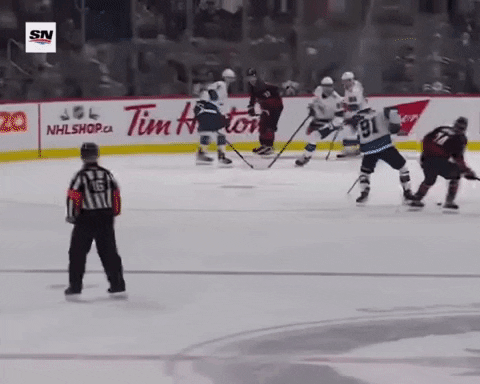Playing Hockey In The Future vs In The Present
Playing hockey before touching the puck
One of the key areas players must work through when developing is leveraging teamwork. While there is plenty of dialogue about the player with the puck, the best - like Hockey IQ Podcast guest and Hockey Hall Of Famer Martin St. Louis - talk about the players off the puck.
Most hockey players only ‘play hockey’ (as in, have the puck) about 2% of the time. And yet, paradoxically, many players are unaware of their surroundings once they actually acquire the puck. The best are aware and “play in the future”.
When Players Decide to Play Hockey
The key difference between those that actually play hockey the entire game vs those that are just out there in hockey gear is when they decide to play:
Player #1 is a player who is just out there in gear. They decide to play hockey once they receive the puck. There is a general lack of awareness.
Player #2 is a player who looks and moves around. They are preparing for their puck touch and moving to defend as threats change.
As you can see, player #1 starts to play hockey when they receive the puck, while player #2 is playing hockey the entire time.
Waiting around for the puck before skating is not good. Defenses want to play opponents who are standing still!
From the Nov 21, 2022, Carolina vs Winnipeg (Highlights) game, we can see players playing in the future.
Winnipeg Goal #1
The eventual goal scorer started skating hard as soon as the puck started bouncing around in his defensive zone.
Winnipeg Goal #2
The player on the breakaway kept skating through disruption. Rather than stopping to grab the puck, the player continues to build speed.
Winnipeg Goal #Overtime
The goal scorer, Josh Morrissey, is seen at the top right of the screen getting skating up ice as soon as there might be a chance his team would win the puck back.
When Do Players Start Skating?
Boiling this down, we can tell when someone starts skating if they are aware and playing hockey all the time. Are they skating before or after they receive the puck?
Rather than waiting for the puck to get to you… a player should skate and assume a teammate will get them the puck.
Without this pre-reception movement, passing breaks down or never gets going. Scoring chances are lost. Goals never happen. The movement takes space and creates opportunity.
Further Reading
The greatest players are “raumdeuters” (Space interpreters) like Thomas Muller
Puck acquisition habits are how players get more puck touches better puck touches




